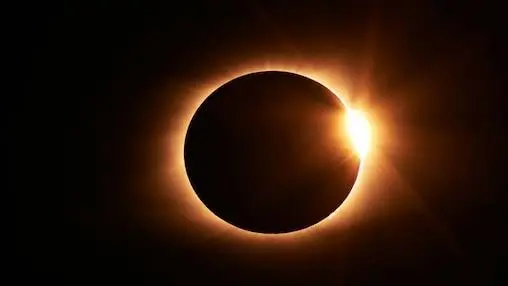Introduction: An Astronomical Event on the Horizon
Mark your calendars, astronomy enthusiasts and sky gazers! Tomorrow, March 29th, 2025, the cosmos is set to deliver a breathtaking spectacle: a solar eclipse. This awe-inspiring event occurs when the Moon passes between the Sun and Earth, casting a shadow upon our planet and temporarily dimming the daylight. While solar eclipses are relatively common astronomical occurrences, witnessing one firsthand is an experience that leaves a lasting impression.

What Exactly is a Solar Eclipse?
To understand the excitement surrounding tomorrow’s event, it’s helpful to grasp the mechanics of a solar eclipse. It’s a precise alignment in space. As the Moon orbits the Earth, there are moments when it positions itself directly between our planet and the Sun. Because the Moon is much smaller than the Sun, its shadow is cast onto the Earth’s surface. Depending on the alignment and the observer’s location within the shadow, the eclipse can appear as a partial solar eclipse, where only a portion of the Sun is obscured, or a total solar eclipse, where the Sun is completely blocked out by the Moon.
Will India Get a Glimpse? Visibility Details
The burning question for many in India is: will we be able to witness this celestial dance? While information suggests that the solar eclipse on March 29th will indeed be visible in certain parts of India, it’s crucial to understand that the visibility will likely be that of a partial solar eclipse. This means that the Sun will not be completely obscured, but rather a portion of it will be covered by the Moon. The exact timing and extent of the eclipse will vary depending on the specific location within India. It’s recommended to check local astronomical resources or weather forecasts for precise details relevant to your city or region.
Safety First: How to Observe the Eclipse
It is absolutely crucial to emphasize the importance of safe viewing practices when observing a solar eclipse. Looking directly at the Sun, even during an eclipse, can cause serious and permanent eye damage. Regular sunglasses offer no protection whatsoever. The only safe way to view a solar eclipse is through special-purpose solar filters, such as eclipse glasses that meet the ISO 12312-2 international safety standard. Alternatively, you can use indirect viewing methods like a pinhole projector, which allows you to project an image of the eclipsed Sun onto a surface. Never look at the Sun through a camera lens, binoculars, or a telescope without a certified solar filter attached to the front of the optics.
Why are Solar Eclipses So Fascinating?
Beyond the sheer visual spectacle, solar eclipses hold a significant place in both scientific study and human culture. For scientists, eclipses provide a unique opportunity to study the Sun’s corona, the outermost layer of its atmosphere, which is usually obscured by the Sun’s bright surface. Historically, eclipses have been surrounded by myth and legend in various cultures, often seen as omens or signs. Even today, the experience of witnessing the sky darken in the middle of the day evokes a sense of wonder and connection to the vastness of the universe.
Don’t Miss This Cosmic Event!
The solar eclipse expected tomorrow, March 29th, 2025, is a reminder of the dynamic and awe-inspiring nature of our solar system. If you are in a region where the eclipse will be visible, make sure to take the necessary precautions to view it safely. This is a chance to witness a truly remarkable astronomical event that you won’t soon forget. Check your local resources for specific viewing times and get ready to experience the magic of a solar eclipse!Sources and related content
